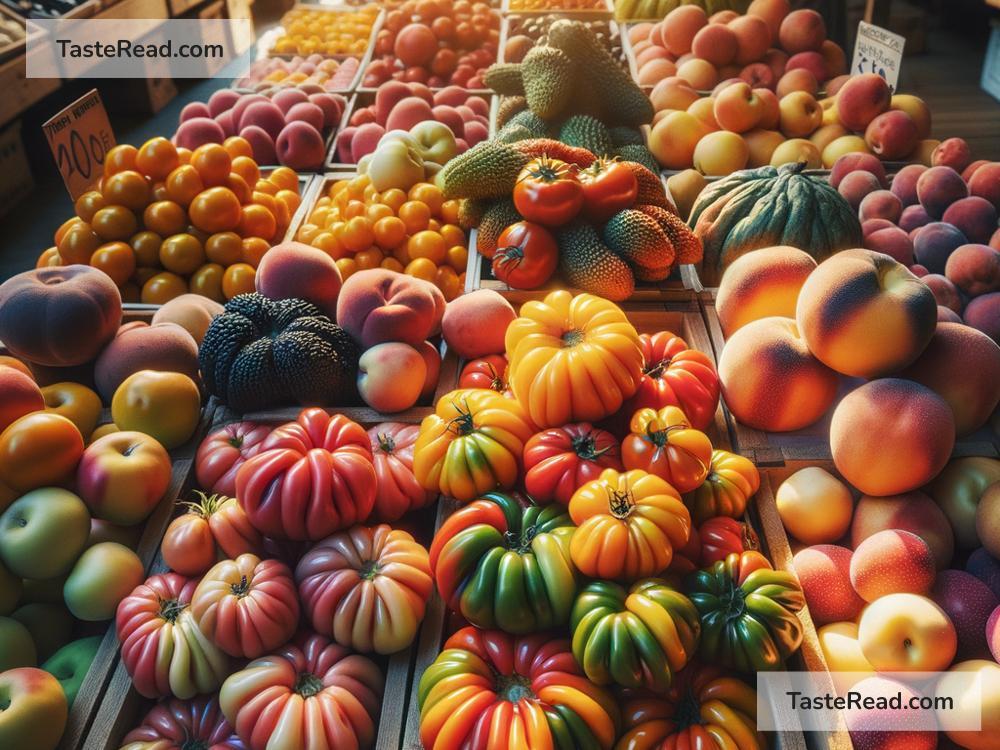Why Heirloom Fruit Varieties Taste Better
Have you ever bitten into a juicy peach or sunk your teeth into a perfectly ripe tomato, and it tasted so good you thought, “Why can’t all fruits be like this?” Chances are, that was an heirloom fruit. Heirloom varieties are special for a lot of reasons, but their standout feature is undeniably their incredible flavor. What makes heirloom fruits taste so good? The answer lies in their history, the way they’re grown, and a focus on quality over quantity.
What Are Heirloom Fruits?
Before we dive into taste, let’s clarify what heirloom fruits actually are. Heirloom fruits come from seeds that have been passed down through generations, often more than 50 years. Farmers have carefully chosen these seeds to maintain specific traits—like taste, aroma, and color. Unlike modern hybrids or GMO varieties, heirloom fruits haven’t been modified in a lab or bred for mass production. They’re the old-fashioned fruits your grandparents (and even their grandparents) might have grown in their gardens.
Why Modern Fruits Fell Behind
Most fruits you buy in supermarkets today are grown with one goal in mind: efficiency. Farmers use hybrid varieties that prioritize durability, uniform appearance, and high yields, meaning the crops grow fast, look identical, and can survive long truck rides without bruising easily. While this makes sense from a business perspective, taste often takes a backseat. Many modern fruit varieties are bred for qualities like “ship-ability” and appearance instead of flavor.
For example, modern tomatoes are often bred to have thick skins and look perfectly round and red. But when farmers sacrifice taste for shelf life, the juicy, sweet, and tangy qualities get lost. That’s why supermarket tomatoes often taste bland compared to a homegrown heirloom tomato.
How Heirloom Fruits Are Different
Heirloom fruits, on the other hand, are all about flavor. Since they haven’t been modified to meet mass-production needs, their genetics have stayed closer to their original forms. These plants were cultivated with a focus on taste and nutritional content rather than industrial convenience.
One reason heirloom fruits taste better is because they often spend more time ripening on the plant before being picked. Many supermarket fruits are harvested early (while under-ripe) so they’re firm enough to withstand transportation. Heirloom fruits, on the other hand, are typically allowed to ripen fully before being picked, which means they develop more sugars, complex flavors, and nutrients. Compare biting into a supermarket tomato to eating a sun-ripened heirloom tomato—it’s like comparing night and day!
Rich Diversity Equals Better Flavor
Another reason heirloom fruits taste better is their diversity. Unlike commercial fruits, heirlooms come in countless shapes, sizes, and colors. For instance, take heirloom tomatoes: there are varieties like Brandywine, Cherokee Purple, Green Zebra, and Yellow Pear. Each has its own unique flavor profile—some are sweet and fruity, others are rich and earthy, or even slightly tangy.
This genetic diversity also means heirloom fruits often have a more intense flavor. That peach you savored wasn’t just sweet; it had a complex balance of sugar and acidity. That heirloom apple wasn’t just crisp; it likely had subtle hints of honey or tartness that made it more interesting to taste.
Modern fruits, on the other hand, are bred to fit a standard mold—a red apple that looks shiny, but tastes almost identical regardless of variety. By choosing uniformity, the food industry sacrifices the bold, unique tastes of heirloom varieties.
How They’re Grown Makes a Difference
The way heirloom fruits are grown also contributes to their superior taste. Heirloom farmers are often more focused on quality rather than quantity. Unlike large commercial growers, heirloom farmers typically use sustainable practices without heavy reliance on synthetic fertilizers or pesticides. They grow their fruits in rich, healthy soil that adds to the flavor complexity.
Since heirloom plants aren’t bred to produce excessively, their energy goes into making fewer fruits with a greater concentration of sugars and nutrients. This results in bolder, tastier fruits. Think of a homemade cake compared to a mass-produced, store-bought one—it’s the same idea!
The Personal Connection
There’s also something comforting about knowing heirloom fruits were handed down through generations. Every heirloom variety has a story behind it—a family saving seeds from their best crops year after year or a farmer in the early 1900s preserving a fruit because of its rich flavor. It’s like eating a piece of history. That human connection to flavors, traditions, and care often translates into a more enjoyable eating experience.
Better for the Planet
Heirloom fruits also taste better because they often align with sustainable practices. By preserving unique varieties, farmers help protect agricultural biodiversity. This contributes to resilient and adaptive crops that support ecosystems. Many commercial fruits rely on just a handful of varieties, which can make us vulnerable to pests or diseases. Eating heirlooms helps support growing practices that value the planet as much as flavor.
Enjoying Heirloom Fruits
If you’re ready to experience heirloom fruits for yourself, start small. Visit a local farmers market or grow some heirloom varieties in your garden. Whether it’s a Cherokee Purple tomato, a Crimson Sweet watermelon, or a small handful of strawberries grown in your backyard, you’ll notice the difference right away. The taste will transport you—it’s sweeter, juicier, and packed with flavors that modern fruits just can’t match.
Conclusion
Heirloom fruits taste better because they’re grown for flavor, retain their original diversity, and get the chance to ripen naturally. They’re a connection to the past, a treat for the present, and a way to support a better future for farming. So, the next time you bite into an heirloom peach that tastes like sunshine, savor it. You’re tasting a little piece of history—and a whole lot of love for good food.


